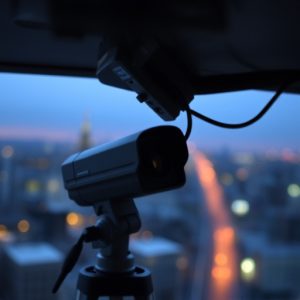Front Door Surveillance: Balancing Privacy Rights and Landlord Permissions
Concealed cameras installed at front doors offer enhanced home security, allowing landlords to monit…….
Concealed cameras installed at front doors offer enhanced home security, allowing landlords to monitor visitors discreetly while maintaining tenant privacy. However, navigating legal boundaries is crucial; in many states, open and transparent camera placement, with clear signage, respects privacy rights. Balancing security and privacy, landlords can foster trust by avoiding secret surveillance and exploring alternative solutions like improved lighting or access control systems, ensuring a safe yet harmonious rental environment without compromising on tenant confidentiality.
“In today’s world of heightened security concerns, understanding the legal boundaries surrounding hidden surveillance in rental properties is crucial. While landlords seek peace of mind, tenants hold strong privacy rights. This article navigates this delicate balance by exploring the ethical and legal dimensions, focusing on secret surveillance spots like front doors.
We uncover commonly overlooked placement strategies for concealed cameras at entry points and delve into effective security measures that respect tenant privacy. Get equipped with knowledge to identify and address hidden cameras in your rental home.”
- Understanding Legal and Ethical Boundaries
- – Exploring the legal aspects of hidden cameras in rental properties
- – Discussing privacy rights of tenants and landlords' permissions
Understanding Legal and Ethical Boundaries
– Exploring the legal aspects of hidden cameras in rental properties
The use of concealed cameras, particularly in rental properties, raises intricate legal questions that tenants and landlords must navigate carefully. While some states explicitly prohibit the installation of hidden cameras without consent, others have more lenient laws or specific exceptions for certain areas like front doors. For instance, many jurisdictions allow landlords to install security cameras as long as they are not secretly or deceptively placed. This means that a camera clearly visible to occupants and visitors may be legally acceptable, but a concealed camera recording activities unnoticed could breach privacy rights.
When considering the placement of concealed cameras for front doors, landlords should prioritize transparency and respect for tenant privacy. A clear notification system, like a sign indicating the presence of a camera, can help ensure that everyone is aware they are being recorded. This approach not only respects legal boundaries but also fosters trust between landlord and tenant, promoting an open and honest environment within the rental space.
– Discussing privacy rights of tenants and landlords' permissions
In the context of rental properties, the balance between tenant privacy and landlord security concerns is a delicate one. Tenants enjoy a reasonable expectation of privacy in their homes, protected by law. Installing concealed cameras, especially at entry points like the front door, raises significant privacy rights issues. Landlords must obtain explicit permission from tenants before implementing such measures, ensuring transparency about surveillance systems.
While landlords have valid security interests, they should approach secret surveillance with caution. Permitting hidden cameras without consent can breed mistrust and legal complications. A better approach is to foster open communication, considering alternative security solutions like improved lighting, robust locks, or access control systems that respect tenant privacy while addressing legitimate safety concerns.
While concealed cameras, such as those strategically placed near a front door, may offer landlords peace of mind, it’s crucial to navigate the legal and ethical boundaries carefully. Respecting tenant privacy is paramount, and any surveillance setup must adhere to strict regulations. Landlords should ensure they obtain proper consent and are transparent about monitoring systems to maintain a fair and lawful renting environment. Understanding these nuances ensures that both parties’ rights are protected.


